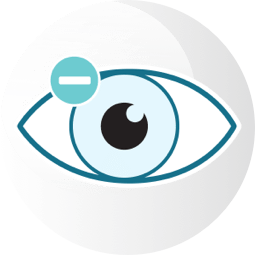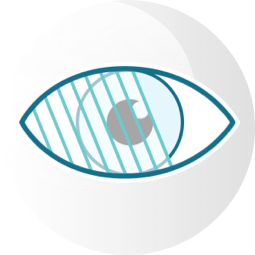Each person’s eyes are unique to their body. But even unique eyes must have certain similarities to see properly. Even slight changes to shape could lead to a prescription for near or farsightedness. These are typically referred to as refractive errors.
The two refractive errors we are discussing today are myopia and astigmatism. These eye problems are similar in many ways, but they are different in the vision problems they cause and the part of the eye they affect.
What Are Refractive Errors?
To understand myopia and astigmatism, let’s take a quick look at refractive errors. More than 150 million Americans have some form of refractive error, making it the most commonly diagnosed ocular issue.
One of the worst things about so many people being affected by these problems is that many probably don’t realize they could be seeing better. This is another great reminder of the importance of getting an eye exam, as your optometrist recommends.
When light enters a healthy, normal eye, the eye’s parts all work together so you can see. A refractive error develops if the size and shape of the eye cause light to bend abnormally.
What Is Myopia?
Myopia is commonly known as nearsightedness. When someone has myopia, they can see close objects clearly, but far away objects appear blurry. This refractive error typically develops during childhood and often stabilizes between 20 and 40.
Because it’s often diagnosed when a child is young, it’s important that myopia control begins as early as 4 to 6 to prevent further problems in adulthood. That is why regular children’s eye exams are an important part of your child’s early eye health.
Symptoms
Blurry distance vision and needing to squint to see are common symptoms. But because myopia often develops in children, they may not always be able to tell you exactly what the problem is. So, knowing how to recognize some of the symptoms is valuable.
Sign to watch for include:
- Sitting close to the TV or in front of the classroom
- Excessive blinking
- Constantly rubbing their eyes
- Squinting
- Seemingly unaware of distant objects
Treatment
Glasses and contact lenses are two common ways of correcting Myopia. Laser eye surgery could be another option for people over 18. Special contact lenses could also be an option that you can discuss with your eye doctor.

What Is Astigmatism?
Like myopia, astigmatism is also caused by an irregular eye shape, specifically the cornea or the lens. They are also prevalent, and regular eye exams are the best way to diagnose them.
When the cornea or inner lens of the eye has an irregular shape, this can cause blurry vision near or far. Not every astigmatism needs treatment, and you may not even need it if the condition isn’t affecting your life.
Researchers still don’t know what causes astigmatism, and they commonly develop in children or young adults, if not at birth. Injuries are another thing that can lead to one developing.
Symptoms
Myopia and astigmatism share common symptoms, like having blurry vision and needing to squint to see clearly. But there are some additional symptoms you could experience with astigmatism:
- Headaches
- Eye strain
- Reduced night vision
Treatment
Treatment for astigmatism is often as simple as a different pair of glasses or contact lens prescriptions. Additionally, laser eye surgery or specialty contact lenses may be a better option for some people.
Review of Differences
As we can see from the brief overview of these refractive errors, they share many similarities. Let’s take a second to consider their significant differences:
Vision Problems
One of the primary differences between myopia and astigmatism is the vision problems they can cause. Myopia by itself typically only affects a person’s distance vision. In contrast, astigmatism may affect near and distant vision, depending on its shape.
Age of Development
Both of these refractive errors can often develop throughout childhood or be present at birth. But astigmatism can develop or worsen at nearly any point in our life. Myopia is typically stable by an adult’s early 20s. It’s important to remember that just because it is unlikely to develop doesn’t mean that myopia cannot develop later in life.
Rarity & Severity
Myopia and astigmatism are both common eye conditions. Astigmatism may be the most common refractive error, but it’s typically minor and often doesn’t present any symptoms. On the other hand, myopia can progress to the more complicated degenerative myopia. This form is becoming quite common and can progress further into adulthood.
Book Your Next Eye Exam
Suppose you suspect that you or your child may have a refractive error like myopia or astigmatism. In that case, a visit to your eye doctor for an eye exam is the first step. Reach out to McCauley Celin Eyecare Associates today.
Our friendly staff is available to answer all your questions and book you an exam at a convenient time.














